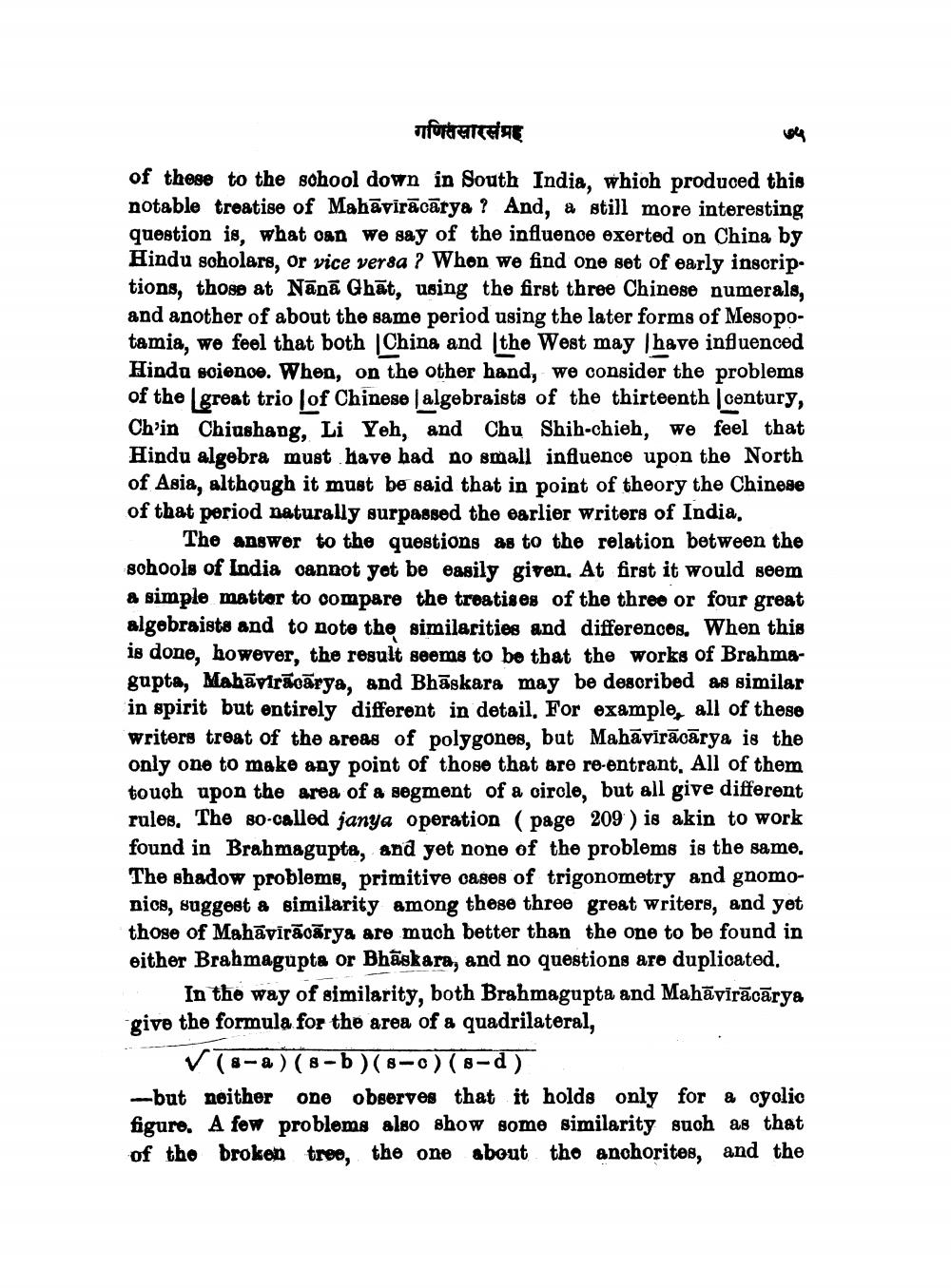________________
गणितसारसंग्रह
of these to the school down in South India, which produced this notable treatise of Mahaviracarya? And, a still more interesting question is, what can we say of the influence exerted on China by Hindu scholars, or vice versa? When we find one set of early inscriptions, those at Nana Ghat, using the first three Chinese numerals, and another of about the same period using the later forms of Mesopotamia, we feel that both China and the West may have influenced Hindu science. When, on the other hand, we consider the problems of the great trio of Chinese algebraists of the thirteenth century, Ch'in Chiushang, Li Yeh, and Chu Shih-chieh, we feel that Hindu algebra must have had no small influence upon the North of Asia, although it must be said that in point of theory the Chinese of that period naturally surpassed the earlier writers of India,
The answer to the questions as to the relation between the schools of India cannot yet be easily given. At first it would seem a simple matter to compare the treatises of the three or four great algebraists and to note the similarities and differences. When this is done, however, the result seems to be that the works of Brahmagupta, Mahaviracarya, and Bhaskara may be described as similar in spirit but entirely different in detail, For example, all of these writers treat of the areas of polygones, but Mahāvīrācārya is the only one to make any point of those that are re-entrant, All of them touch upon the area of a segment of a circle, but all give different rules. The so-called janya operation (page 209) is akin to work found in Brahmagupta, and yet none of the problems is the same. The shadow problems, primitive cases of trigonometry and gnomonics, suggest a similarity among these three great writers, and yet those of Mahaviracārya are much better than the one to be found in either Brahmagupta or Bhaskara, and no questions are duplicated.
In the way of similarity, both Brahmagupta and Mahāvirācārya give the formula for the area of a quadrilateral,
(-a) (8-b)(s-c)(s-d)
-but neither one observes that it holds only for a cyclic figure. A few problems also show some similarity such as that of the broken tree, the one about the anchorites, and the




